In the 10-day yoga intensive class, we went over some of the sitting postures (asanas) that are most commonly used for meditation and pranayama practice. In order to provide a ready reference for the participants of the program, as well as for the benefit of all the readers of this blog, I am giving a brief overview of these sitting postures here.
Before diving into a discussion of the different postures, let us just reflect on the word "asana" for a moment. The Sanskrit word "asanam – आसनम्" is derived from the root word "aas – आस्" which means to sit or rest in one place. In the classical yoga texts (Hatha Yoga Pradeepika, for example), there several asanas described. Some of the more commonly practiced asanas are – sukhasana, padmasana, swastikasana, siddhasana, vajrasana, virasana, bhadrasana etc. The word asana is not just the sitting posture, but is also applied to the seat on which one sits. So, if you are sitting on a yoga mat for meditation, then the mat is also called an asana. Likewise, a stool, chair, bench etc where one sits becomes an asana.
In the classical yoga text "Yoga Sutras of Patanjali", the word asana is applied to sitting postures that are used for meditation. Patanajali describes it as "sthira-sukham-asanam (स्थिरसुखमासनम्)" which means "a sitting posture is one which is firm/steady and comfortable". In the science of Hatha Yoga which was developed much later, the meaning of the word asana was extended to include all the physical postures (e.g., sarvangasana (shoulder stand), halasana (plough pose etc) used in a Hatha Yoga practice.
Sukhasana (Easy Posture)
Sukhasana (सुखासन) is the most common sitting posture that people use for sitting on the floor. In this posture, you sit cross-legged with one ankle crossing over the other ankle and the heels hidden under the opposite thighs. The spine should remain erect and the body maintained still during meditation/pranayama practice. If it is uncomfortable for you to sit on the floor, you may like to sit on a cushion. A cushion provides support both for the knees and the spine. You may also like to rest your back against the wall, keeping the spine straight.
Siddhasana (सिद्धासन) – Adept Pose
- Sit on your mat with the legs stretched out in front.
- Bend the left knee and place the heel of the left foot under the perineum. The sole of the left foot is against the right thigh.
- Bend the right knee and place the right ankle on top of the left ankle. Slide the toes (except the big toe) under the fold of the left knee (between the left thigh and the calf muscles).
- Keep the spine upright, eyes closed and body relaxed during pranayama/meditation
Swastikasana (स्वस्तिकासन) – Auspicious Pose
Swastikasana is a very minor variation on the Siddhasana mentioned above. While in the Siddhasana pose, reach for the right big toe and pull it up. In the final pose, both the big toes are showing above the fold under the opposite knees.
Ardha-Padmasana (अर्ध पद्मासन) – Half Lotus
- Place the left foot under the opposite thigh
- Place the right foot on top of the left thigh. Try to bring the heel of the right foot as close to the abdomen as possible.
- Keep the spine upright, eyes closed and body relaxed during pranayama/meditation
- Reverse the position of the two feet and practice on the other side
Padmasana (पद्मासन) – Lotus Pose
Padmasana is a popular pose and is the one most frequently seen in traditional yoga texts. In his meditations, Lord Shiva is normally shown sitting in this pose.
- In this pose you place both the feet on top of the opposite thighs, with the heels as close to the abdomen as possible
- There should be no strain in the knees, ankles or thighs while maintaining the pose. If needed, relax the position of the feet.
- Keep the spine upright, eyes closed and body relaxed during pranayama/meditation
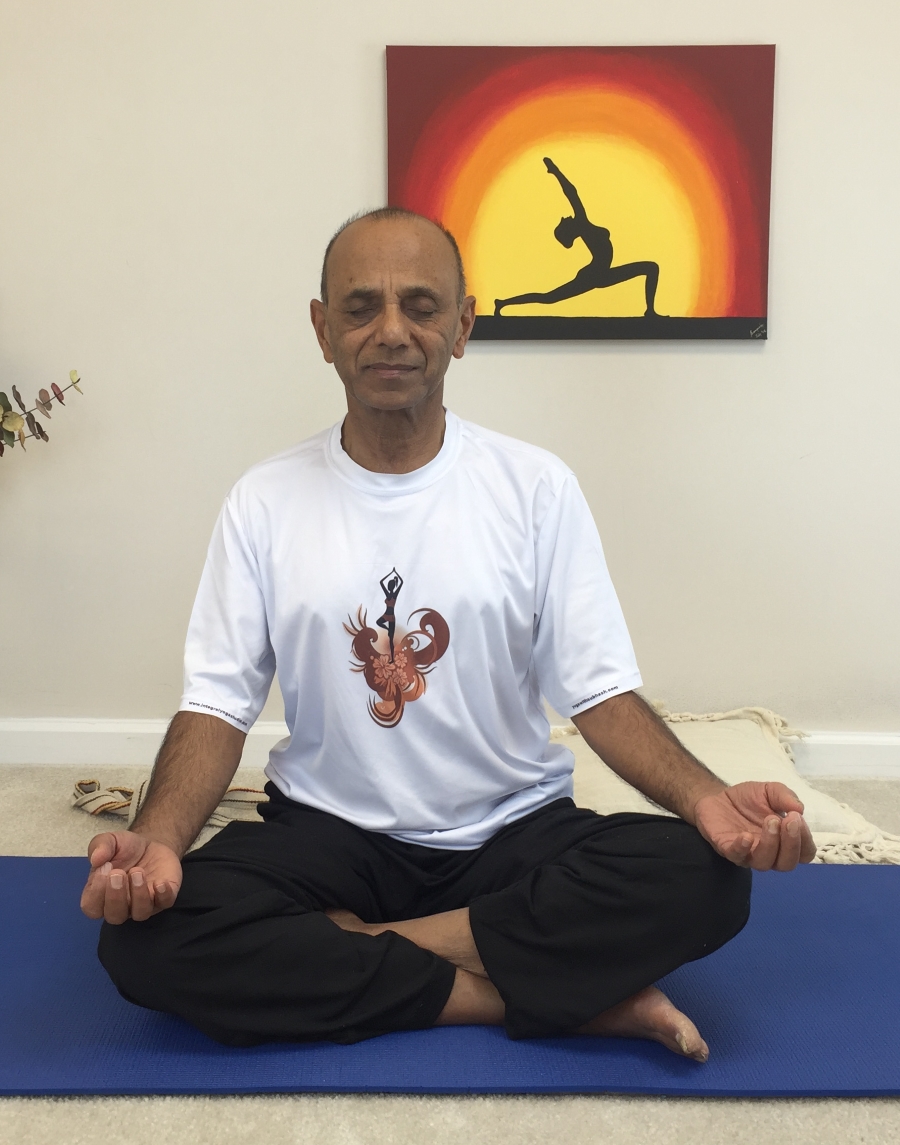
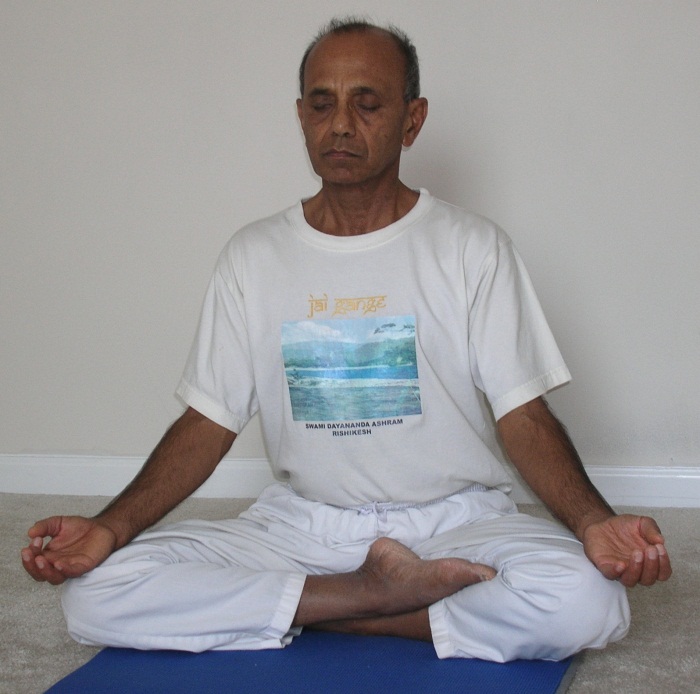
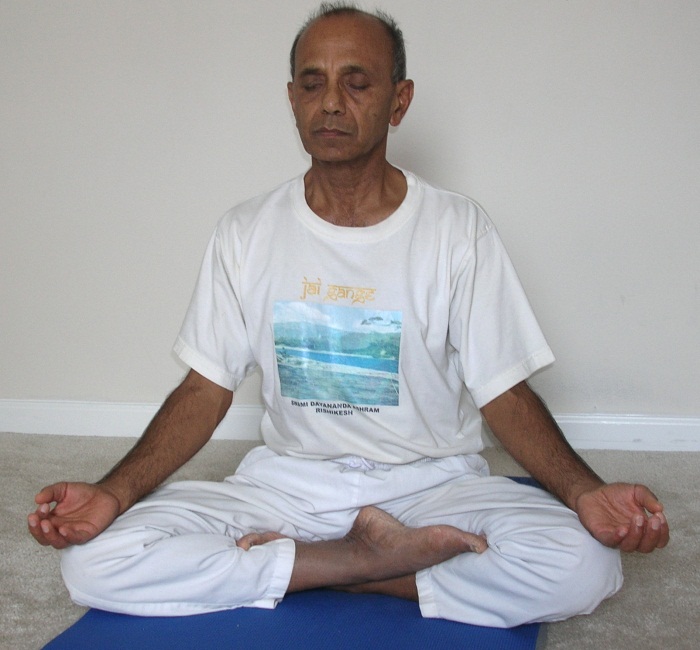
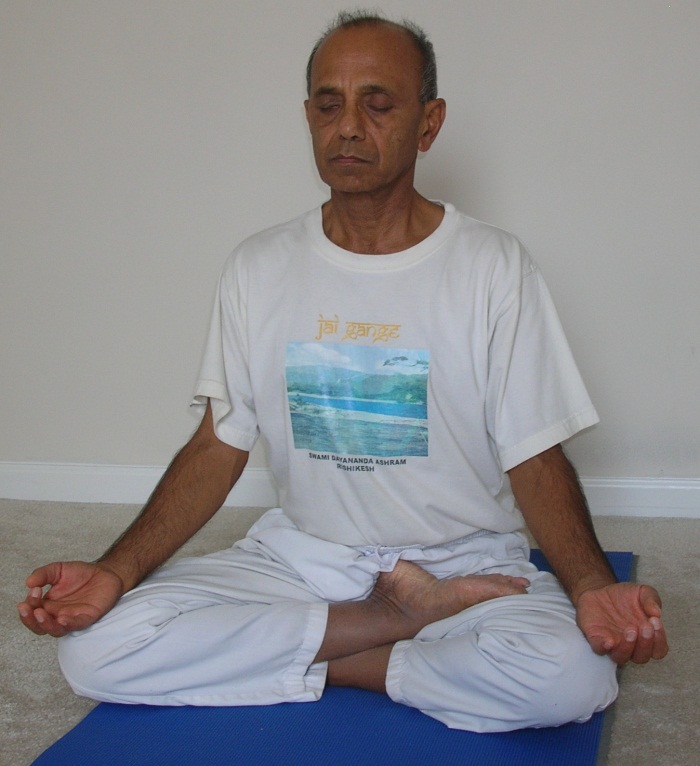
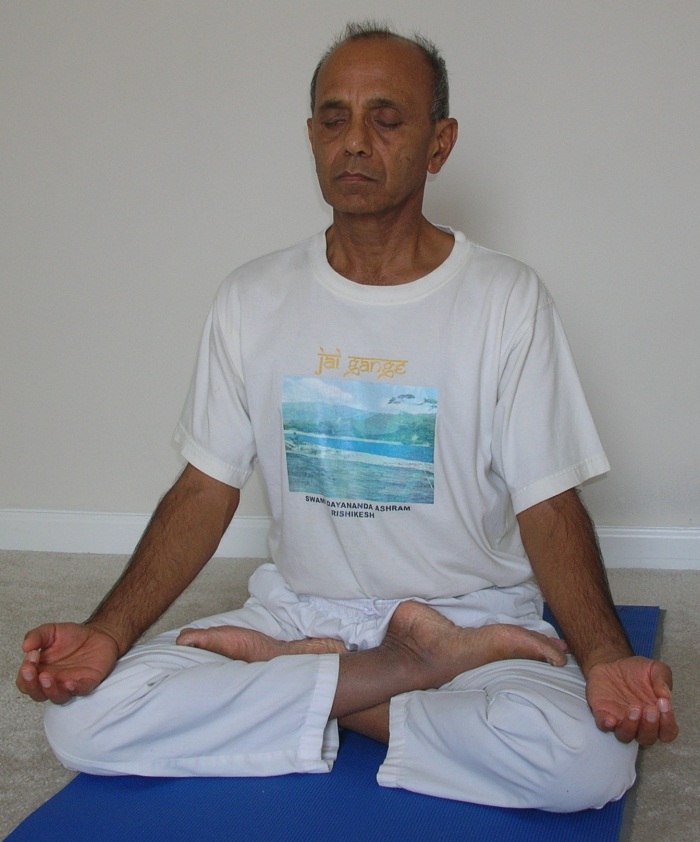
[…] in any comfortable, cross-legged meditation posture with the spine upright, arms and shoulders […]